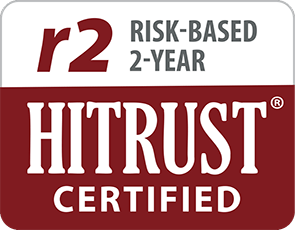Written by Brad Kittredge,
Brightside Health
10 Minute Read

Virtual mental health care is readily available, yet people with more severe and complex cases are being left behind. That’s simply not good enough.
One in five adults in the U.S. lives with a mental illness. Rates of anxiety, depression, and suicidal thoughts are skyrocketing, and more than half of adults with a mental health condition don’t receive treatment at all. With statistics like these, there’s no denying our country is facing a serious mental health crisis.
While a myriad of telemental health care solutions have come to market, most have simply moved offline care online. And while this increases access for those with less severe symptoms, it does little to address more severe cases. As a result, people with more complex needs are often treated ineffectively, or turned away altogether by virtual services that lack the clinical sophistication and rigor these patients need — potentially causing more harm than good. Simply put, that’s just not good enough. To address our country’s mental health crisis, we must efficiently and effectively treat people with the most severe and complex cases, and acute needs, at scale.
This requires making significant improvements to the way mental health care is delivered virtually. Through the targeted application of data science and technology, deep human connection, and making care affordable, we can not only save more lives, we can materially reduce the cost of treating the patients who are most in need, and who drive the majority of mental health care costs.
Empowering clinicians with insights for greater impact
By its nature, virtual mental health care is technology-enabled. Like other industries that have moved online, there is an opportunity to utilize the rich data generated in digital interactions to generate key insights that drive superior outcomes throughout the customer (patient) journey.
Precision prescribing
The prescribing decision is one phase of that journey that is ripe for innovation. One of a psychiatric provider’s most sacred responsibilities is to determine whether or not to prescribe, and which medication/s to select. Here, we can use data science to help clinicians tailor their prescribing decision to each individual — a practice we refer to as precision prescribing.
Due to the prevalence of one-size-fits-all prescribing practices, millions of people are on suboptimal treatment plans for mood disorders, or have stopped treatment altogether due to side effects, lack of response to the medication, or both. As shown in the widely-known STAR*D trial, prescribing any given antidepressant achieves a response in only 35% of the population. As a result, way too many people receive ineffective treatment — often leading them to stop care altogether. This guess-and-check approach to psychiatry isn’t good enough when people’s lives are at stake.
AI-driven decision support can be a much better alternative, helping clinicians get each individual’s treatment right the first time. By utilizing machine learning models to predict which medication will be most tolerable and effective for each patient, we can empower clinicians to make more informed treatment decisions and more effectively care for a larger portion of the population.
At Brightside Health, this is particularly important, as 71% of our patients need help with three or more conditions, 75% come to us with severe or moderately severe depression, and 50% start with suicidal ideation.
When one of our psychiatric providers determines prescribing medication is appropriate, we use our proprietary PrecisionRx engine to analyze comprehensive clinical and demographic data and surface individually-targeted medication recommendations. Taking into consideration over 1,000 medication/dose combinations from a formulary that excludes all controlled substances, PrecisionRx helps our clinicians craft a personalized treatment plan, resulting in a 70% response rate to the first medication prescribed. Since we monitor all of our patients very closely, we promptly intervene with the other 30%, adjusting dosage and/or medications appropriately. The impact of treatment adjustments and outcomes is fed back into our models for continuous improvement.
Proactive, timely intervention
Another compelling opportunity is to apply data science to the copious amounts of data generated from online check-ins, messaging, and other forms of remote monitoring to assess a patient’s progress and identify risk levels in near-real-time. Using these insights is a novel way to enable proactive, timely intervention — increasing patient engagement and saving lives.
Whether the PHQ-9, GAD-7, or another standardized measure is used, regular online check-ins are a core component of most virtual mental health care services; monitoring a patient’s score is a tried and true method of gauging the severity of their mood disorder. Digital messaging has also become table stakes and can be an effective way for patients and clinicians to communicate outside of an appointment. As helpful as these capabilities are, we can apply data science to make them even more useful — in this case by proactively identifying when a clinician should intervene with a patient.
For example, we can compare an individual’s progress on standardized measures against the predicted trajectory of that patient’s recovery, and when the actual falls short of the prediction, automatically alert the patient’s clinician to review their case. We can also utilize natural language processing (NLP) to evaluate messaging in near-real-time and automatically escalate risk to the patient’s clinician, ensuring prompt, proactive intervention.
When supported with these capabilities, patient adherence improves, and we can significantly increase the likelihood that clinicians have the right touchpoints at the right time, with each patient — particularly those with suicidal ideation.
At Brightside Health, we utilize these and similar technologies within our care model, enabling the efficient and effective treatment of severe and complex mood disorders. Within 12 weeks, our clinicians help 86% of patients experience clinically significant improvement (88% for those reporting suicidal ideation at intake), with 71% achieving remission (66% for those reporting suicidal ideation at intake). Of the patients achieving remission within 12 weeks, 65% did so within 28 days, and 82% did so within 48 days. The mean time to remission was 31 days (O’Callaghan et al., in press).
Our care model has also proven to deliver 50% higher rates of response and remission than top-ranked health systems are able to achieve with traditional care (Chokshi S, Senathirajah Y, Yadav V, et al., Cureus Journal of Medical Science). These outcomes enable us to materially reduce the cost of treating the patients who are most in need, and who drive the majority of mental health care costs.
The indisputable influence of human connection
While data science and other technologies can significantly enhance the delivery of mental health care, they cannot replace human connection in helping people get better — a strong therapeutic alliance leads to better adherence, engagement, and outcomes.
Since the onset of the COVID pandemic, telehealth has become the predominant way people receive mental health care services, making a clinician’s ability to form strong virtual relationships with their patients especially critical. Clinicians must be intentional about building personal connections so the technology doesn’t overshadow the humanity involved. In addition to training on strong webside manner, we must prioritize building a trusted, 1:1 relationship with each patient, and creating a safe environment that fosters open dialogue and drives regular engagement.
Could a provider see more individuals if a coordinator gated access or patients were passed among a pool of clinicians if coordinators led the way and patients were passed off between intermediaries? Potentially, but at what cost and to what end? Mental health care requires nuanced, supportive care and clinical judgment at every step, and patients should never experience gated access to their clinician.
At Brightside Health, we prioritize human connection and achieve it by ensuring one-to-one care from a licensed clinician from start to finish. Our patients see and have unlimited communication with the same clinician throughout their treatment, enabling them to build an alliance that yields both continuity of care and improved outcomes. This strong clinician-patient relationship — bolstered by comprehensive clinical protocols spanning supervision, case reviews, and ready access to escalation paths — ensures safe, effective treatment for even the most complex cases.
Integrating within the wider ecosystem for affordability
Virtual mental health care can be extremely effective, but offering great care alone is not enough; it must also be affordable. There are three main ways telemental health care companies are going to market today: cash pay, direct-to-employer, and working within the existing healthcare system. Of those options, working within the existing health care system is the only one that offers a low-friction and sustainable way to provide affordable, high-quality care to any population, through partnerships with each of the stakeholders that help people pay for and navigate care choices: payers, plan sponsors, providers, and partners/brokers. In addition to enabling greater access, these partnerships open the door to strategic population-based initiatives and create a reimbursement model that enables financial alignment for all parties involved.
We employ this integrated approach at Brightside Health, and we are proud to have earned national partnerships with Cigna, Aetna, and Optum. As a result, we are in-network for over 55 million people nationwide, with many additional payer partnerships on the horizon. Combined with our ability to treat even the most severe cases that account for the greatest expense, Brightside Health can uniquely help payers, providers, and plan sponsors reduce cost and improve outcomes in a way no other company can.
Going a step further: treatment for suicidal intent
While this virtual care model has helped Brightside Health successfully treat tens of thousands of individuals to date — a large portion of whom came to us on the higher end of the severity, complexity, and acuity spectrums — we still have work to do.
Suicidal ideation has increased every year since 2011, and suicide rates have increased 30% overall since 2000, with the last couple of years of the pandemic seeing a surge. People at risk for suicide are more likely to visit an ER or have an inpatient hospitalization, driving up the total cost of care for both patients and health systems. In parallel, there has been a growing shortage of clinicians available to treat these high-risk populations, resulting in both a significant unmet need and lives lost unnecessarily.
Fifty percent of our own members start treatment with suicidal ideation, and we are committed to offering programs that enable us to serve even the most vulnerable populations. With that in mind, later this year, Brightside Health will be launching the first virtual national program for proactively treating suicidal intent, based on the Collaborative Assessment and Management of Suicidality (CAMS) — a care model backed by 30 years of research and five randomized controlled trials. We’re eager to put what we’ve learned to use and become an even more effective solution for those most in need.
The bottom line: Saving lives and bringing accountability to mental health care
There’s no denying that telehealth has significantly improved access to mental health care, but it’s clear we have work to do to change the trajectory of the mental health crisis. We have a responsibility to provide care to higher-risk populations as effectively and sustainably as we do to those with lower levels of severity. This requires rethinking how mental health care is delivered in virtual settings to ensure a safe, effective solution for every individual no matter where they fall on the severity, complexity, and acuity spectrums. When we can help even the most severe cases we can significantly reduce avoidable healthcare costs for individuals, health plans, and health systems — and more importantly leave a lasting, life-changing impact on the lives of those who need it the most.
Article originally published on Medium.
Get in Touch




